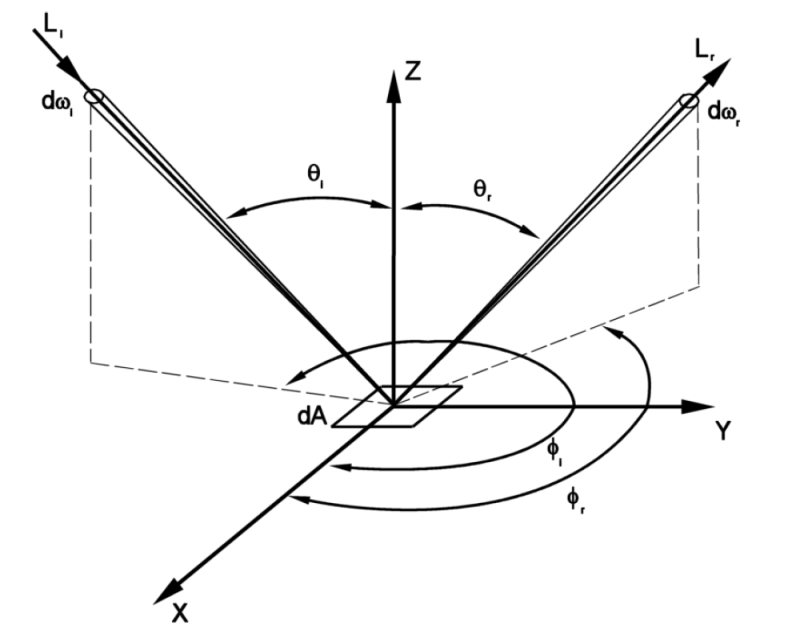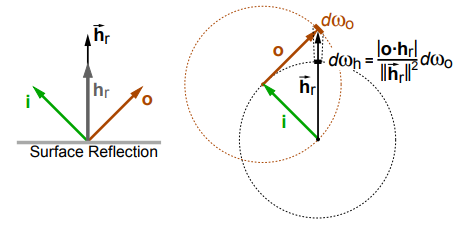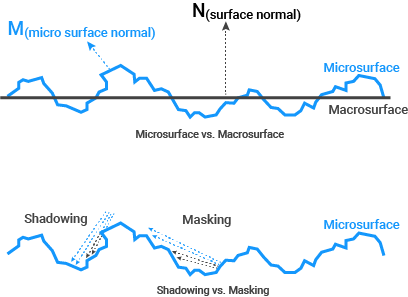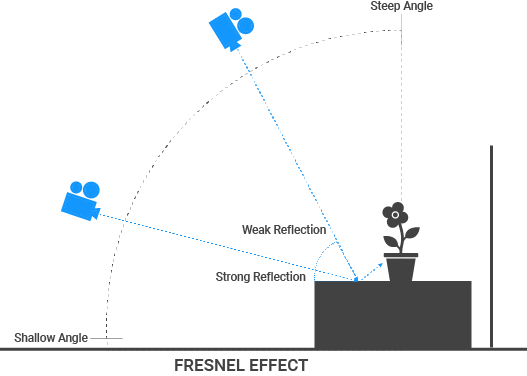BRDF Models
BRDF for the Rest of us
All Octane materials allow for the choice of specific BRDF models to best match the type of material being recreated within Octane. These are described below:
Diffuse (opaque) BRDF Types
Octane — this is the BRDF model available in Octane prior to version 3.07, before support for other BRDF models was introduced. It is not accurate but can make a punchy-looking glass.
Lambertian — this model renders simple matte and diffuse surfaces, but does not consider mode complex surface characteristics, such as sub-surface scattering or varying roughness values. For more complex surfaces, Oren-Nayar is superior.
Oren-Nayar — this model is a directional microfacet diffuse model, and is an extension of the Lambertian model meant for rough surfaces using diffuse reflection. It can handle surfaces with irregularities auch as concrete, fabric and so on. Oren-Nayar does support directional scattering as well as light bounces between microfacets. It is good for clay, sand, unfinished wood and concrete, but the other models discussed in the following section offer far more ability. That said, those models also are a bit slower to render.
Reflective & Transmissive BRDF Types
Octane — this is the BRDF model available in Octane prior to version 3.07, before support for other BRDF models was introduced. It is not accurate but can make a punchy-looking glass.
Beckmann — this model is popular for PBR rendering and produces realistic highlights and reflections. Like Ward and GGX, Beckmann uses a microfacet model and may differ in terms of realism and render speed. Beckmann calculates the specular component based on the Fresnel approach, reflecting light differently with different angles of incidence. The microfacets may occlude light and reflections from surrounding microfacets. Beckmann is a good choice for recreating polished metal surfaces, like steel or aluminum; glossy surfaces like automotive paint or varnished wood; dielectric materials, which are often smooth, such as plastics and ceramics and glass.
GGX and GGX Energy Preserving — this model also uses microfacets, and is often a better choice for very rough surfaces than Beckmann, as this model handles broader highlights and stronger roughness values more realistically than Beckmann. Unlike other models, GGX is energy-preserving (when GGX Energy Preserving is chosen as the BRDF type in a given material), which ensures that the total reflected light from a surface does not exceed the incoming light (which other BRDF models allow). Like Beckmann and others, GGX and GGX Energy Preserving calculates specular reflections with the Fresnel equation, considering changes in the angle of incidence. GGX Energy Preserving uses multiple scattering between microfacets, which prevents surfaces from incorrectly getting darker (no energy is lost), which tends to occur with surfaces that have high roughness values in other models. Overall, GGX Energy Preserving is a good, all-around BRDF model for metals and rough plastics as well as glossy surfaces.
STD — this model also uses microfacet distribution, via a Normal Distribution Function. Essentially, this model uses statistical modeling for the microfacet distribution on a given surface, and is suitable for rough, porous surfaces with more pronounced light scattering. As a result, the STD model is great for materials that are very rough, such as rough metallic surfaces, rough glass and stone, and is considered superior to Beckmann or GGX when roughness values are extreme. Like the other models, STD also uses the Fresnel effect for dielectric and metallic surfaces, and is also energy-conserving.
Ward — this model uses anisotropic reflections, making it a good choice for material like fabric (satin, velvet), hair, and brushed metals, and uses energy conservation. Ward is available only for the Glossy Material and the Metallic Material.
BRDF for nerds
|
Not a nerd? The rest of this section covers background information regarding BRDF for reference purposes. Feel free to skip it. |
BRDF is an acronym for “Bidirectional Reflectance Distribution Function,” and is a mathematical description called a function that describes how light reflects from an opaque surface. There are several related functions to BRDF, and a quick online search for the term "BRDF" will return figures that look like the figure below:

or this:

These figures can also be represented as mathematical equations as we can see here:

Components of BRDF
BRDF, in more detail, is a function defined as the ratio of the reflected light (radiance energy) to the incoming light (irradiance energy) at the point "x" on the surface.

BRDF deals with the directional distribution reflection of light from any surface. It does not deal with the light rays that penetrate into a surface (absorbed) and must obey with the basic laws of physics in order to give realistic results.
Energy Conservation
Energy conservation must be ensured in any system. Accordingly, for all possible directions, the total energy of the light reflected from a surface can never be more than the total energy of the incoming light.
Octane 2021 added an Energy preserving GGX BRDF model, available via the BRDF model drop down menu in each Octane material type. This option will help to improve energy preservation, particularly noticeable in materials with high roughness, improving the look of reflections on these surfaces. This will maintain the material's visible characteristics in any lighting situation.
The topic is discussed in a little more depth here.
Non-Negativity
The reflection value must be between 0 and 1 because of the conservation of the energy principle. Therefore, the ratio of the reflected light (radiance energy) to the incoming light (irradiance energy) must be between 0 and 1. BRDF also includes this ratio with the cosine term. That is, the range of BRDF is 0 to infinity. Also, both radiance and irradiance values cannot be negative.
Reciprocity
Also known as Helmotz's reciprocity law, the BRDF value must not change when the incoming vector and the outgoing (view) vector are interchanged. In other words, when the travel of the light reflected from the surface is reversed, the light must follow the same path and the BRDF must be the same in both cases.
Microfacets Theory
Microfacet theory is a technique developed to approximate the roughness or imperfection of every surface in the real world (let's call it Roughness) and is applied in cooperation with occlusion methods called shadowing and masking. In realistic BRDF models, the surface is considered to be formed from uneven grooves (microfacets). Microfacet is calculated by how much of the ratio is due to masking and shadowing of interaction with the light.
The masking state is when the light is reflected by one surface of the microfacet, then the reflected portion is blocked by the other "microfacet". Shadowing is the case where the light is blocked by the other "microfacet" before it reaches the surface of the "microfacet".

Fresnel Effect
BRDF also incorporates the Fresnel Equation, which is how surface reflection varies according to the observed angle and the surface IOR (Index of Refraction) values. For example, if you look at the plant pot on a reflective table in orthogonal direction (steep angles), you will see a weak reflection. But if you move closer to the Shallow Angle (grazing angle), you will see stronger reflections.

Isotropy and Anisotropy BRDF
For many materials, if the direction of the light and the view direction are fixed, the reflection does not change as the material is rotated around the surface normal. These properties are called isotropic materials. Examples of isotropic materials include metals, plastics, and painted surfaces.
Anisotropic surfaces, on the other hand, change their reflectance values by rotating the surface around its normal, in contrast to isotropic surfaces. Examples of anisotropic surfaces are metal brushes, polished metal, human hair, fur, velvet, and wood.
SOURCES:
If you wish to learn more, follow these links:
An Overview of BRDF Models - here
Wikipedia page about BRDF - here
About microfacet method (warning, load time can be long) - here
BRDF for computer Graphics - here
Wikipedia page for Fresnel Equations - here